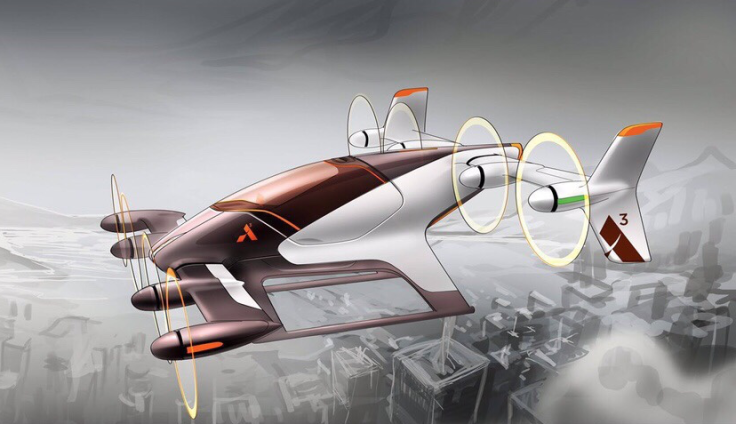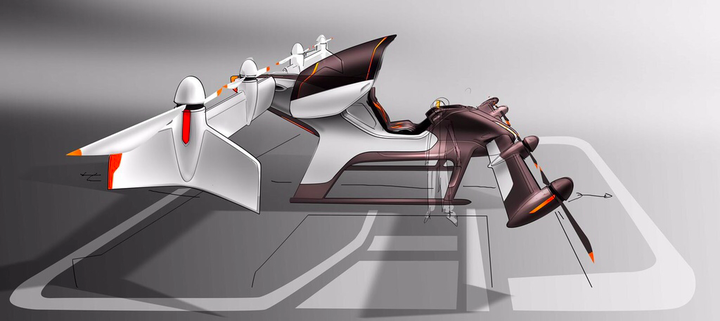Vahana: Airbus is developing its own top secret personal flight vehicle
In Silicon Valley, Airbus is working on its own VTOL one-man personal flying car to hopefully launch in 2020.

It's not just startups and inventors who are interested in personal flight vehicles – now French aerospace company Airbus has revealed that it is working on its very own flying car project in Silicon Valley too.
A<sup>3 (pronounced "A-cubed") is the Silicon Valley venture capital division of Airbus Group that invests in emerging innovations in order to help define the future of flight. One of the new unit's first projects is Vahana, a personal flight aircraft designed to carry either a single passenger or cargo.
Like other personal flight vehicles being developed in the world, Vahana features vertical take-off and landing (VTOL) technology, but similar to the human-carrying drone Ehang 184, it will be completely autonomous, so the passenger will not need to pilot the aircraft.
From the concept drawings released by Airbus, the Vahana has two sets of wings, eight rotors and four electric motors. Depending on whether the aircraft needs to fly vertically or horizontally, the wings can tilt downwards when hovering above the ground, or straighten in order to fly like a regular fixed-wing aircraft and push the vehicle forward through the air.
"The aircraft we're building doesn't need a runway, is self-piloted, and can automatically detect and avoid obstacles and other aircraft, A<sup>3's chief executive Rodin Lyasoff wrote in a blog post.
"We seek to help enable truly vertical cities by opening up urban airways in a predictable and controlled manner. We believe that full automation will allow us to achieve higher safety by minimising human error. Our aircraft will follow predetermined flight paths, with only minor deviations if obstacle avoidance is needed."
Trying to get cetification for autonomous passenger aircraft

Lyasoff says that the regulatory and technical climate is now favourable for personal flight vehicles because of improvements in battery safety; low cost, reliable avionics components that are readily available; improved obstacle avoidance technology; and advances in automated composite manufacturing.
Airbus wants its creation to become the first ever certified passenger aircraft without a pilot and plans to have a full-scale, working prototype of the Vahana before the end of 2017, and a commercialisable demonstration vehicle by 2020.
While there are still multiple concerns about unmanned aerial vehicles (UAV) sharing the same airspace with commercial jets, to say nothing of humans being carried by a fully automated machine, Airbus is optimistic that automation is the future, and that it will make the skies safer if the airspace is adequately managed.
However, at the moment remotely piloting an aircraft with people aboard is illegal, so instead, Chinese drone technology firm Ehang is working with US-based regenerative medicine firm Lung Biotechnology to use the Ehang 184 only to transport artificial human organs for emergency transplants.
The idea is that rather than having to use a helicopter, the organs could be sent by themselves from organ-manufacturing facilities directly to hospitals, completely automated and controlled by the drone's onboard software. But flying drones out of the line of sight is presently also not allowed in the US, so it could be some time before this technology can reach its full potential.
Multiple parties want to make personal flight possible
Aircraft that can take-off and land vertically – similar to Doc Brown's DeLorean in Back to the Future II and spaceships seen in many sci-fi films – are available today but they are mostly used by the military.
Independent inventors are particularly interested in personal flight vehicles and have been driving innovation in this area for several years. Flike, a personal flight vehicle designed by the Hungarian government's research institute Bay Zoltan Nonprofit. Flike is a tricopter that can carry a total weight – including payload – of 240kg. In April, Flike completed a successful manned test flight where it was able to hover and manoeuvre in the air while compensating for the wind, for 90 seconds.
There is also the Hoverbike by UK firm Malloy Aeronautics; the Quadro UAS personal flight vehicle built by Dutch UAV engineer Thorstin Crijns which carries 110kg of weight (including a 59kg payload); and the Volocopter VC200 – a two-seater multicopter that can carry a 450kg payload by German firm e-volo, which features technology from Intel-owned Ascend Technologies and has been endorsed by Nasa.
Universities around the world are researching personal flight – the National University of Singapore (NUS) has built the Snowstorm multicopter drone which can carry a payload of 70kg and can stay in the air for five minutes; and the University of Oslo in Norway set a new Guinness World Record in January for the heaviest payload ever lifted by a remote-controlled multicopter drone, with plans to next test carrying a human into the air.
© Copyright IBTimes 2025. All rights reserved.






















